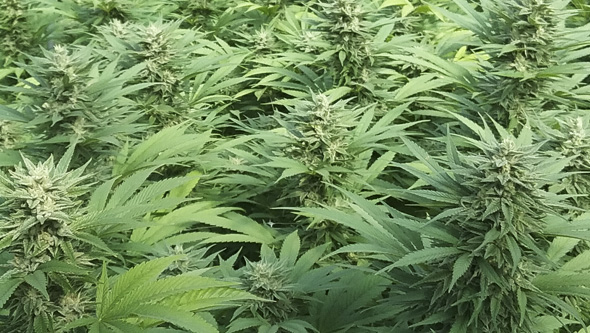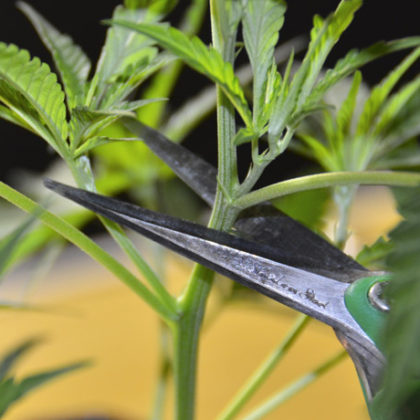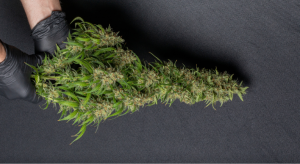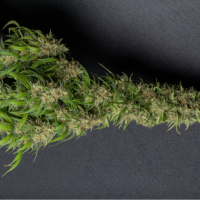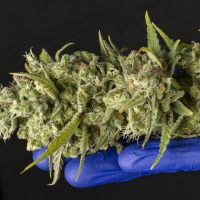What’s a cutting?
Cuttings are fragments taken from plants that are capable of rooting and replicating the original plant, which is why they’re taken from branches rather than leaves. A cutting is a clone of what’s known as a mother plant. This means that they’ll grow to be genetically identical to the plant they’re taken from with the exact same characteristics. Taking cuttings is a relatively easy task, but you’ll need to know how to do it correctly in order to make sure that your cannabis clones root properly. In this post we’re going to talk about how to clone cannabis plants.
How to Clone Cannabis Plants
Cloning cannabis plants is generally a simple, easy task, but you’ll need to be meticulous, organized and clean in order to do it correctly. The following video is a summary of the process, followed by a detailed step by step explanation on how to clone cannabis plants so you can successfully take your own cannabis cuttings in order to grow clones.
In order to follow the steps mentioned in the video and learn how to clone cannabis plants, you’ll need to have a few things first:
- A mother plant. In order to take cuttings from a plant that’s been grown from seed, it needs to be an adult plant. Cuttings inherit all properties and characteristics from their mother plant, so you’ll need to make sure that the mother plants from which you’ll be taking the cuttings are free of insects and fungi. They should be as healthy as possible if you want your clones to prosper.
- Sharp scissors. Preferably straight-tipped scissors for a precise cut.
- Rooting substrate (jiffy, rockwool etc) for planting your clones.
- Rooting hormones in gel or liquid format.
- Pharmacy–grade alcohol for disinfecting your cutting materials and tools.
- Gloves (latex, nytril etc.). Used to keep the cutting and mother plant free of infections and bacteria.
- Container to store the clones, such as a mini greenhouse.
- Light. Low energy lighting systems such as the 2x55w lighting system (for covering ½ m2) or the 4x55w lighting system (for covering 1m2) are perfect.
Step 1: Choosing a Mother Plant
You can only use feminized or regular seeds as mother plants. Autoflowering strains are out of the picture because they flower automatically and can’t be kept in the growth/veg stage.
Choosing a mother plant is quite a long topic that deserves it’s own article. The best way to do this is to choose from a wide range of options. This gives you more room to find the perfect strain for what you had in mind.
When it comes to choosing a high-quality mother plant, here are a few general tips:
- Plant as many seeds as you can for the selection process, depending on the amount of space you have available for growing in. The more seeds you plant the more plants you’ll be able to grow, and the more precise your selection process will be. For example, if you germinate 10 seeds you’ll be able to choose the one with the best aroma, highest yield, most resin etc.
- Once your plants have grown large enough and have developed their hormonal system (around 30 – 40 days after germination) you’ll be able to take cuttings from them and keep them under 18h lighting (make sure to mark them so you can identify them later on). This allows you to keep strains until you’ve decided which plant you want to keep as a mother plant.
- Use a good strain. It’s essential to start with a high-quality cannabis strain if you want to have a high-quality mother plant. When it comes to mother plants, we don’t recommend skimping on seeds; a good mother plant can really make you stand out as a grower.
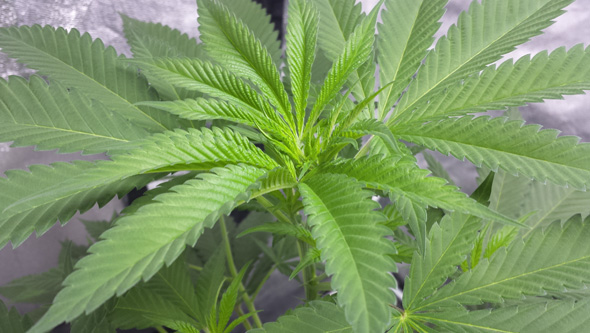
Step 2: Choosing the Right Branches
- The ideal size for a cutting is from 7 to 12 cm. When they are short, it’s much easier for the vascular system to keep functioning and improves clone perspiration. In longer cuttings there’s more distance, which means they need energy, time, and a much lower successful rooting rate.
- The branch from which you take the cutting should have three nodes in the stem – if this isn’t possible, at least two. They need one upper node for growth, and one node just above the cut, leaving out the leaves; this increases root growth. An extra node in between means it’ll grow two more branches, which gives it more are to work with once rooted in much less time.
- The branches on the lower half of your mother plant are older, which means they’re hormonal system is more developed. Your cuttings need hormones that cause root growth rather than branch growth; these are called rooting hormones.
Step 3: Preparing Substrate for Cuttings
There are plenty of different types of substrate for cannabis cuttings, although the two most common are jiffys (peat cubes) and rockwool.
- Jiffys are more affordable, although they also have more of a clay-like structure. They retain more humidity which makes for less oxygen and a more compact substrate. We recommend hydrating your jiffys using pH 6 water (you can add root stimulants too at low doses, such as Hesi Radicular) and draining any extra water from them so they’re not soaked. If they’re too moist, your cuttings may rot.
- If you’re going to use rockwool cubes you’ll need to adjust their pH first. We recommend letting them sit in pH 5.5 – 6 water for a few hours (24h max.) until their pH has been stabilized. This type of material is inert, which means it doesn’t contain nutrients, so you should add some root stimulant alongside growth fertilizer, reducing both dosages to half of the recommended dose.
- Place your jiffy or rockwool cubes on trays.
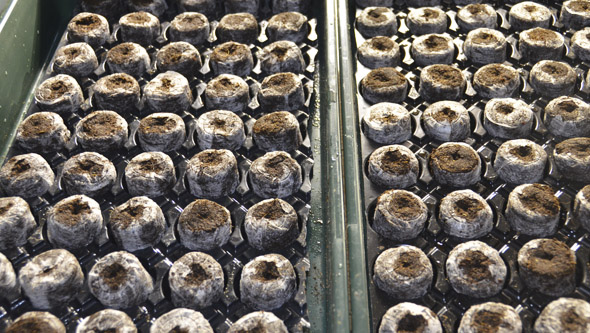
Step 4: Take your Cuttings
- Use pharmacy-grade alcohol (and fire if possible) to disinfect your tools (scissors, cutter, etc). Needless to say, be cautious when using alcohol and fire.
- Use latex or nytril gloves to handle the cuttings in order to keep them bacteria-free.
- Cut the desired branches using your scissors, and then cut them down to the desired cutting length before using rooting hormones.
- The correct angle for taking a cutting is about 45° from the main stem of the plant. This stops air from forming in the plant tissue (xylem or phloem) and makes water absorption easier, keeping the cutting healthy.
- Cut the leaves on the clone in half. This reduces the perspiration surface, keeping metabolic activity low while hormonal changes take place. They don’t have roots yet, so there’s almost no way they can absorb water and nutrients other than through their leaves.
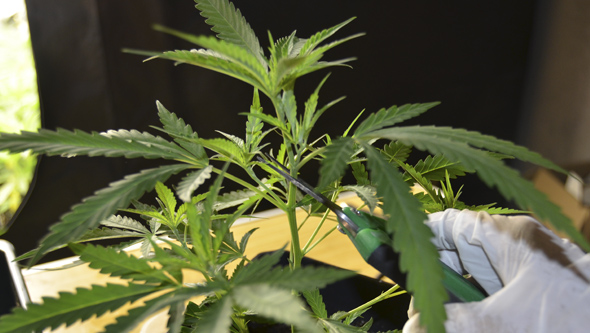
Step 5: Rooting Hormones
- If you’re using gel hormones such as Vitroclon, all you have to do is submerge your clones in the gel a few centimetres, after having cut them at a 45° angle. Wait about 10 – 20 seconds and then place the cutting in your jiffy or rockwool cubes, holding the stem firmly so that it doesn’t bend.
- If you’re using liquid rooting hormones such as Flower hormones, submerge the bottom of the cutting in the liquid, wait 10 – 20 seconds, wet the bottom with water and then plan them in their jiffy or rockwool plug.
- Cover your cuttings with the top of the propagator or greenhouse in order to maintain humidity.
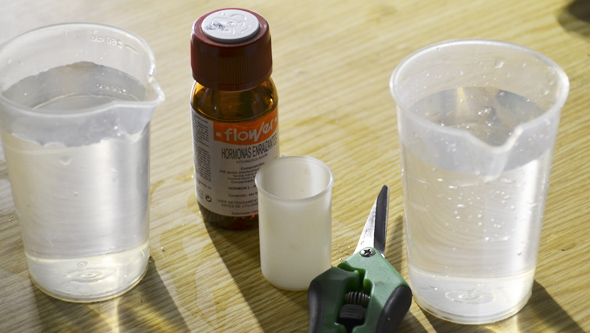
Step 6: Maintaining your Clones
- High humidity. The propagator in which your clones are rooting will need high humidity so that their substrate doesn’t dry out.
- Fresh air. You’ll need to open up the propagator every day in order to allow fresh air I and give the plants oxygen.
Clones take an average of 7 – 15 days to root fully, so you’ll need to keep an eye on their roots every few days. Once you see the first roots begin to appear, you can transplant your clones to flowerpots with soil or coco coir if grown in jiffy plug, or to your hydroponic set up if you’re using rockwool.
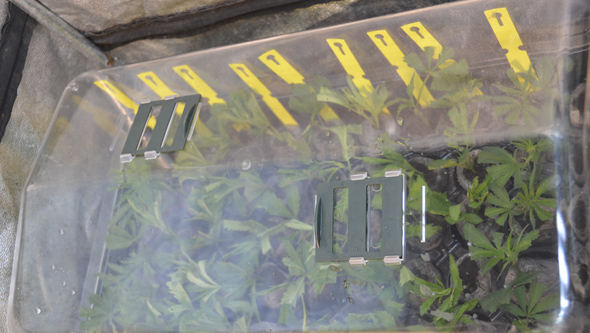
How to Clone Cannabis Plants – General Advice
- Once you have your clones, make it a habit to check on them every day so that you can give them some fresh air.
- Be as clean as possible at all times, using protection (latex gloves etc.) and sterilize your material (scissors, tray, propagator…) if you want healthy, successful clones.
- If you notice that your propagator is losing humidity, spray your clones in order to moisten the plugs they’re in. You can add root stimulant to your water, too, for an extra boost.
- Keep the temperature in your propagator above 20°C at all time – cannabis cuttings detest the cold.
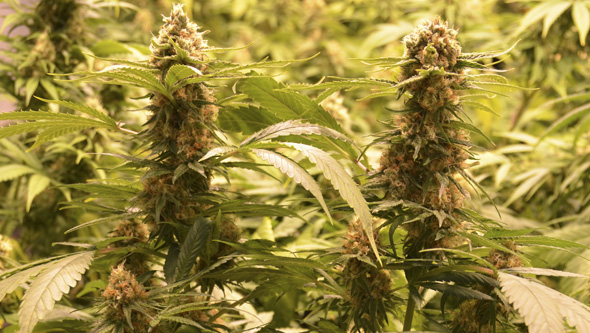
Advantages of working with cannabis cuttings or clones
The main benefit of working with clones is that they grow in the exact same way as their mother plant. This means that they’ll all grow in the same way, have the same nutritional needs, mature at the same time, you’ll already know their sex, and they’ll produce predictable and high-quality results every time.
If you plan on having a large amount of plants in your grow set up, we highly recommend working with clones, as they make watering, training and pruning much easier, plus they’ll all be ready to harvest at the exact same time.
What are you waiting for? Make your own cannabis clones and mother plants and enjoy your favourite cannabis!
